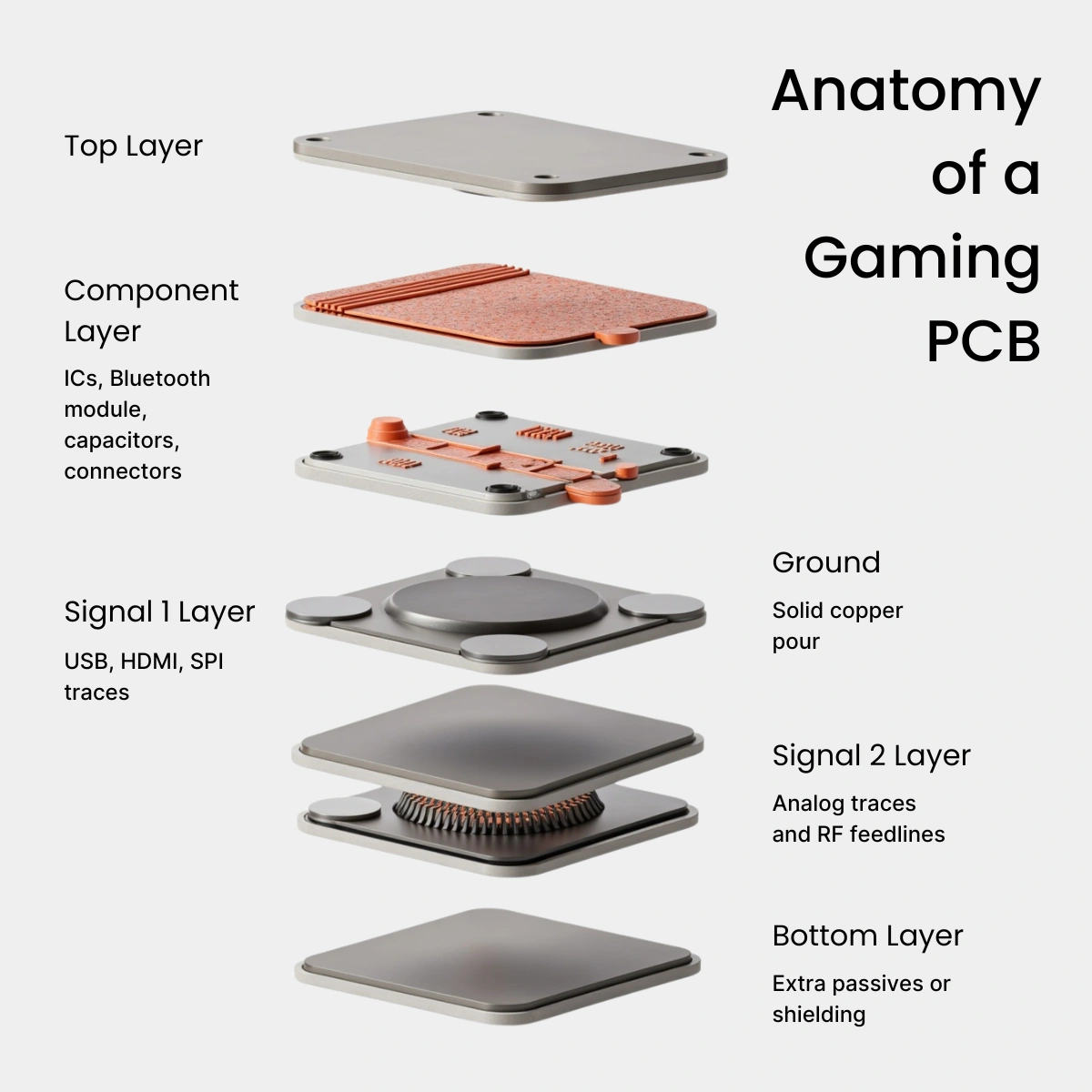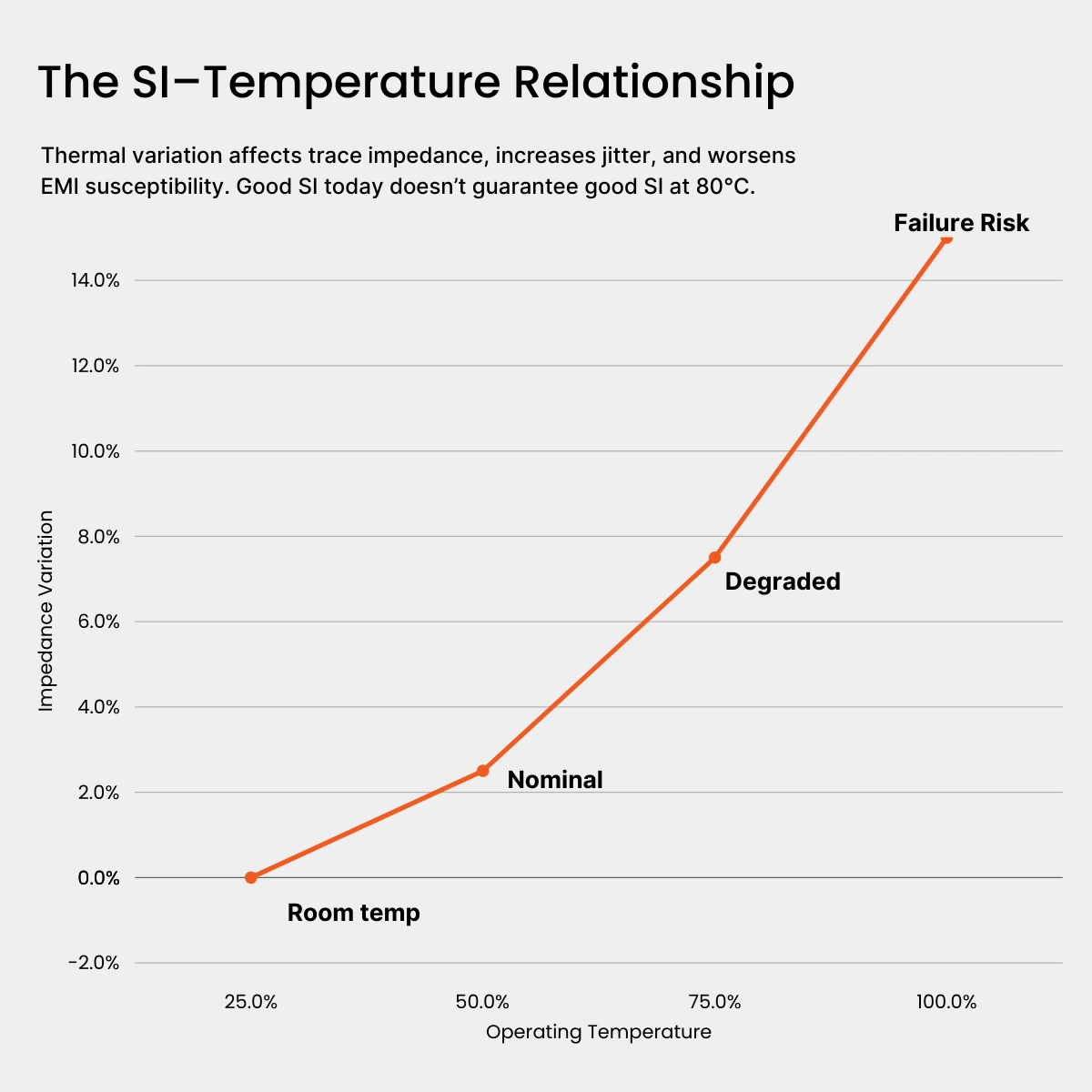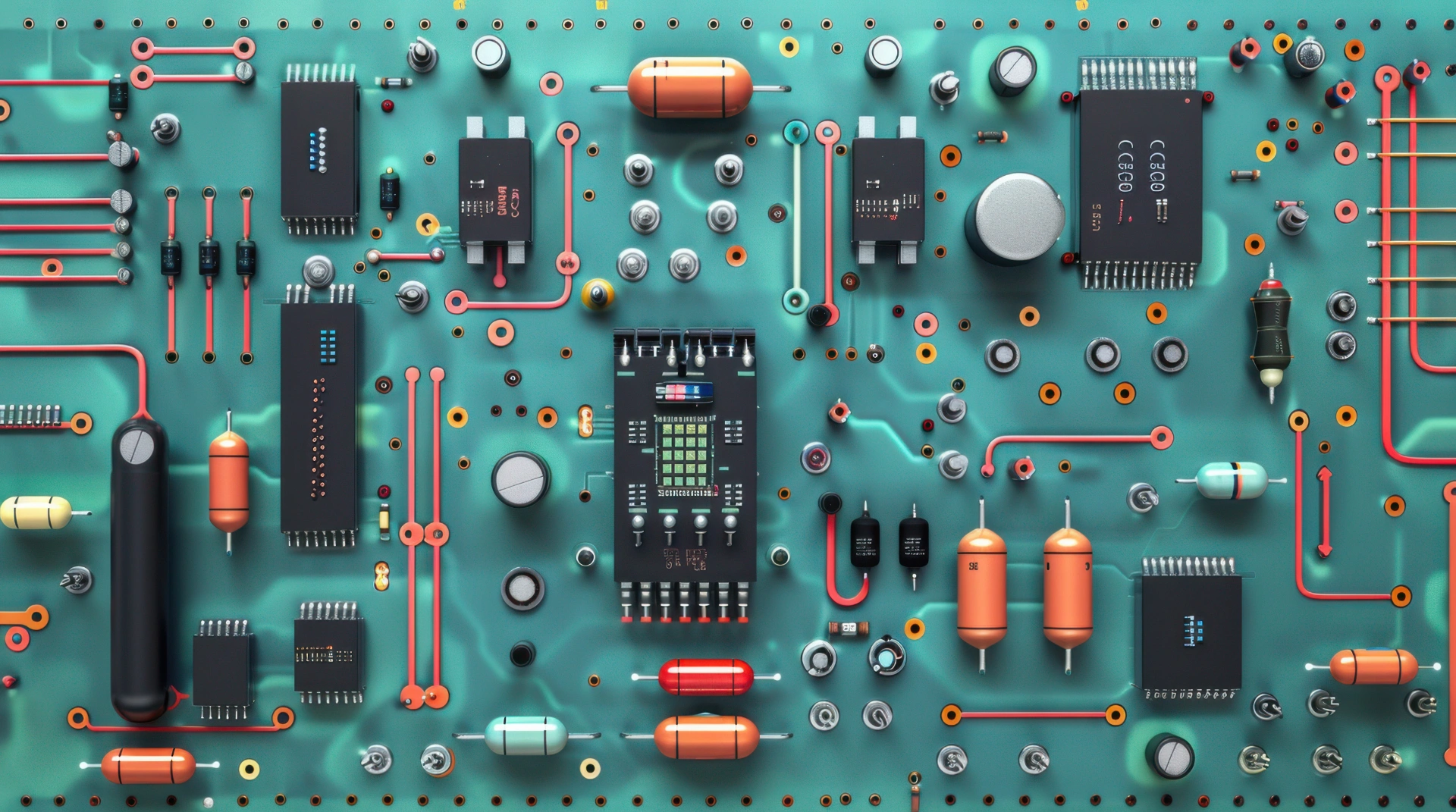Poor PCB Design, Poor Gameplay: EMI and SI in Gaming Hardware
Fixing a signal integrity issue during schematic design costs 10x less than fixing it post-layout, and 100x less than after production. Source: Siemens (Mentor Graphics) PCB Cost of Change Analysis
The role of PCB design in product performance has been amplified as gaming hardware has gotten faster and more compact. Engineers are being pushed to fit high-speed data lines, audio circuits, and RF modules into tight enclosures—often without the luxury of multiple board revisions.
The result? Latency issues, degraded audio quality, signal dropouts, and intermittent failures that are hard to reproduce but costly to fix.
At the heart of many of these problems are two culprits: poor Signal Integrity (SI) and Electromagnetic Interference (EMI). Developing the next-gen headset, custom controller, or low-latency USB interface, understanding how layout decisions affect SI and EMI is essential.
Signal Integrity and EMI aren’t isolated problems – they’re an effect of—how everything is routed, powered, and grounded. In gaming hardware, where digital, analog, and RF components are packed into tight, performance-critical spaces, those relationships (and the clean layouts they necessitate) matter more than ever.
Devices with PCB densities above 50 components per square inch are 2–3x more likely to encounter EMI issues during pre-compliance testing. Source: IPC Design Review Standards
Why Signal Integrity Matters in Gaming Devices
In gaming hardware, responsiveness is everything. Whether it’s a wireless headset or a USB controller, poor signal integrity can introduce latency, audio distortion, or unpredictable behaviour.
At today’s data rates, PCB traces act like transmission lines. Reflections, crosstalk, and impedance mismatches aren’t edge cases—they’re everyday design risks. High-speed digital signals degrade quickly if layout fundamentals aren’t in place. Gaming devices often combine digital, audio, and RF systems on a compact board. That density raises the stakes: tight trace routing, poor terminations, or flawed return paths can create failures that are hard to debug but easy to ship.
Signal integrity issues don’t show up in isolation. They’re built into the board when layout doesn’t match performance requirements.
EMI in Compact Gaming Hardware
Electromagnetic interference (EMI) is a constant threat in modern gaming devices—especially as form factors shrink and wireless features expand. Unlike signal integrity issues, which are often internal, EMI affects how your product interacts with the outside world.
Small enclosures force high-speed traces, power lines, and antennas into close proximity, increasing the risk of coupling and radiated emissions. A noisy power supply, aggressive clock signals, or poorly shielded components can easily push a product out of spec—triggering compliance failures or degrading nearby subsystems like Bluetooth or RF.
In gaming hardware, EMI isn’t just about passing CE or FCC testing. It can be the reason wireless headset drops out under load, or why analog audio lines pick up digital noise during gameplay.
The challenge is that EMI doesn’t always show up during early testing. It emerges in the final form factor, under real conditions—with all the ground bounce, harmonics, and thermal variation that come with it. Minimizing EMI isn’t about guesswork. It starts with layout discipline: clear signal return paths, isolated domains, proper decoupling, and shielding where it matters.
Over 30% of consumer electronics returns are traced back to EMI, power noise, or signal integrity problems—despite passing functional tests. Source: EETimes, Return Analysis Reports
PCB Design Best Practices for Signal Integrity
To optimise signal integrity (SI) and reduce electromagnetic interference (EMI) in gaming hardware, focus on these essential PCB design best practices:
1. Controlled Impedance Routing
Maintain consistent trace widths and spacing based on layer stack-up to prevent reflections and ensure stable signal transmission.
2. Ground Planes and Return Paths
Use continuous ground planes beneath signal layers to provide low-impedance return paths and reduce EMI.
3. Minimising Trace Lengths
Keep high-speed and critical signal paths short and direct to limit interference and delay.
4. Minimising Via Usage
Avoid unnecessary vias and stubs, as they introduce inductance and disrupt signal flow.
5. Differential Pair Routing
Route differential pairs (e.g., USB, HDMI) with tight spacing and matched lengths to minimise skew and noise.
6. Separating Signal Domains
Isolate high-speed digital signals from sensitive analogue paths to prevent cross-coupling and interference.
7.Shielding Techniques
Use guard traces, via stitching, and solid ground planes to shield critical signals from EMI.
Gaming hardware runs hot—if your layout doesn’t account for temperature, your product might not survive a marathon session.
EMI Mitigation Techniques in Gaming Products
Decreasing EMI in small gaming devices requires layout choices made with precision—there’s no room for guesswork. Here are some tried-and-true techniques for managing interference:
1. Shielding and Grounding
- Utilize metallic shielding cans for sensitive analog or RF sections.
- Ensure all shielding cans are securely connected to the PCB ground plane, eliminating floating metal parts.
2. Proper Decoupling Capacitor Placement
- To minimize transient voltage spikes and radiated noise, place the decoupling capacitors in close proximity to the power pins of the integrated circuit.
- Strategically use capacitor arrays to achieve improved filtering across the frequencies.
3. Segregate Analog, Digital, and RF Domains
- Make sure sensitive analog sections (like audio circuits) are far separated from the digital and RF domains.
- Avoid routing high-speed digital lines directly above or near analog components.
4. Filtering and Ferrite Beads
- Integrate EMI filters (LC filters) on input/output connectors, power lines, and critical signal paths.
- Apply ferrite beads selectively on power rails and sensitive traces to suppress high-frequency noise without sacrificing signal quality.
5. Ground and Power Plane Management
- Keep ground planes solid and continuous, avoiding splits under high-speed signals.
- Use power planes effectively to reduce current loops, lower impedance, and minimize radiation.
6. Clock Signal Management
- Shield and isolate clock signals carefully—they’re often the most significant EMI sources.
- Consider using spread-spectrum clocking to distribute clock energy across frequencies and lower peak emissions.
A delay of even 15 ms in controller response time can negatively impact competitive gameplay—comparable to 1–2 frames of lag on a 60 Hz display.”
Source: NVIDIA, Pro Gamers’ Benchmarks
.
Design Trade-offs & Real-World Tips
PCB design in gaming hardware is full of compromises. Performance, cost, and manufacturability don’t align perfectly, so the early decisions really matter.
Layer Count vs. Cost: Adding more layers can help with both routing and EMI, but they also increase the cost of your bill of materials (BOM). Always consider the trade-offs between performance, cost, and layer count when designing your PCBs.
Loop in Procurement: Material changes late in the game can break impedance and delay production. Align early.
Prototype Realistically: EMI shows up when everything’s in place—housing, antennas, clocks. Test in conditions that reflect the final product.
Watch Thermals: Signal behaviour is affected by heat. Ensure the layout accommodates thermal management—not only trace geometry.
Think Compliance from Day One: Don’t wait until pre-cert to start thinking about testing. Design with testing in mind.
Poor PCB layout doesn’t just cause design delays—it shows up as dropped signals, noisy audio, and inconsistent performance once your product starts shipping. In gaming hardware, where every millisecond and every decibel counts, EMI and signal integrity are not something you can leave to chance.
When it comes to ensuring clean signals within our designs, overengineering is not the answer. Instead, we must make deliberate and informed decisions early in the process. With the right layout strategy, some decent simulation, and a bit of cross-team coordination, we can avoid nasty surprises and deliver hardware that actually works when the pressure is on.
Need support on a high-speed, EMI-sensitive gaming product? Our engineers partner with top global brands to meet and overcome these very design and technical challenges—right from early layout reviews to design-for-manufacturing guidance. Contact us to speak with a specialist.
Explore more related content
Why Air Quality Devices Are the Fastest-Growing Smart Home Category in 2025
Why Air Quality Devices Are the Fastest-Growing Smart Home Category in 2025H6: “96% of Europe’s urban population is...
Critical Minerals, Critical Thinking: Building Resilient Electronics Supply Chains
Critical Minerals, Critical Thinking: Building Resilient Electronics Supply ChainsThe global economy is expected to...
Cybersecurity for Smart Factories: A 2025 Playbook for OT Resilience
Cybersecurity for Smart Factories: A 2025 Playbook for OT ResilienceWhy "smart" now means "secure" or not at all Smart...





